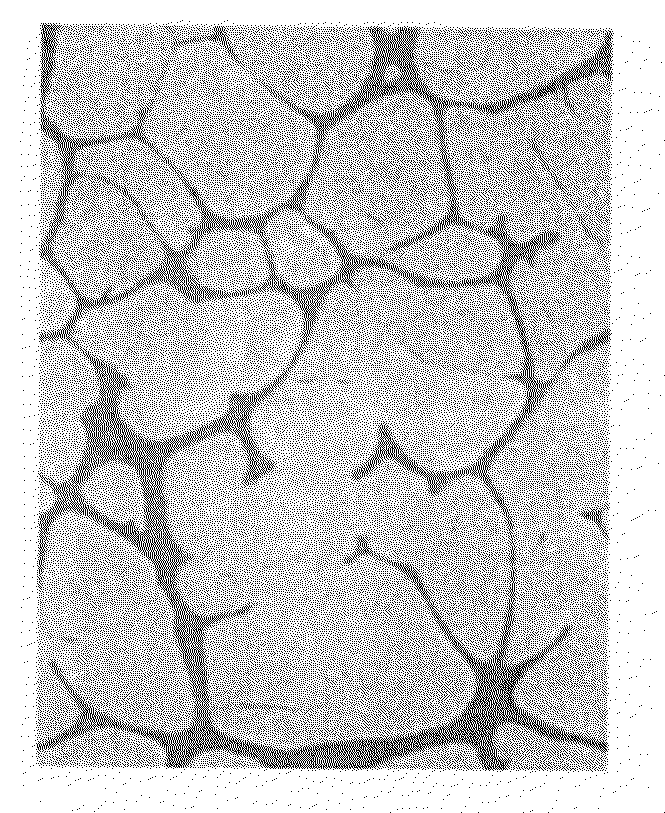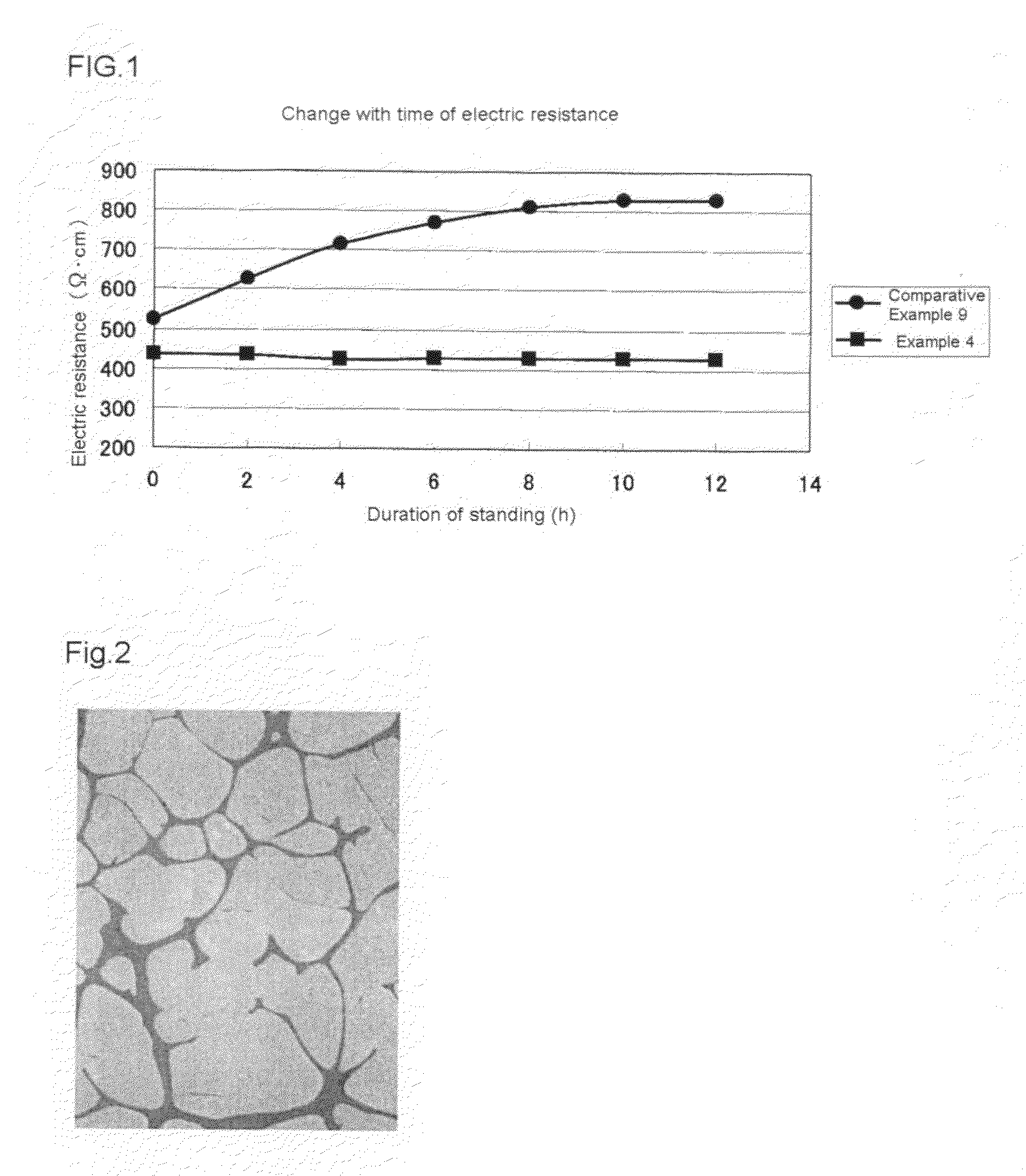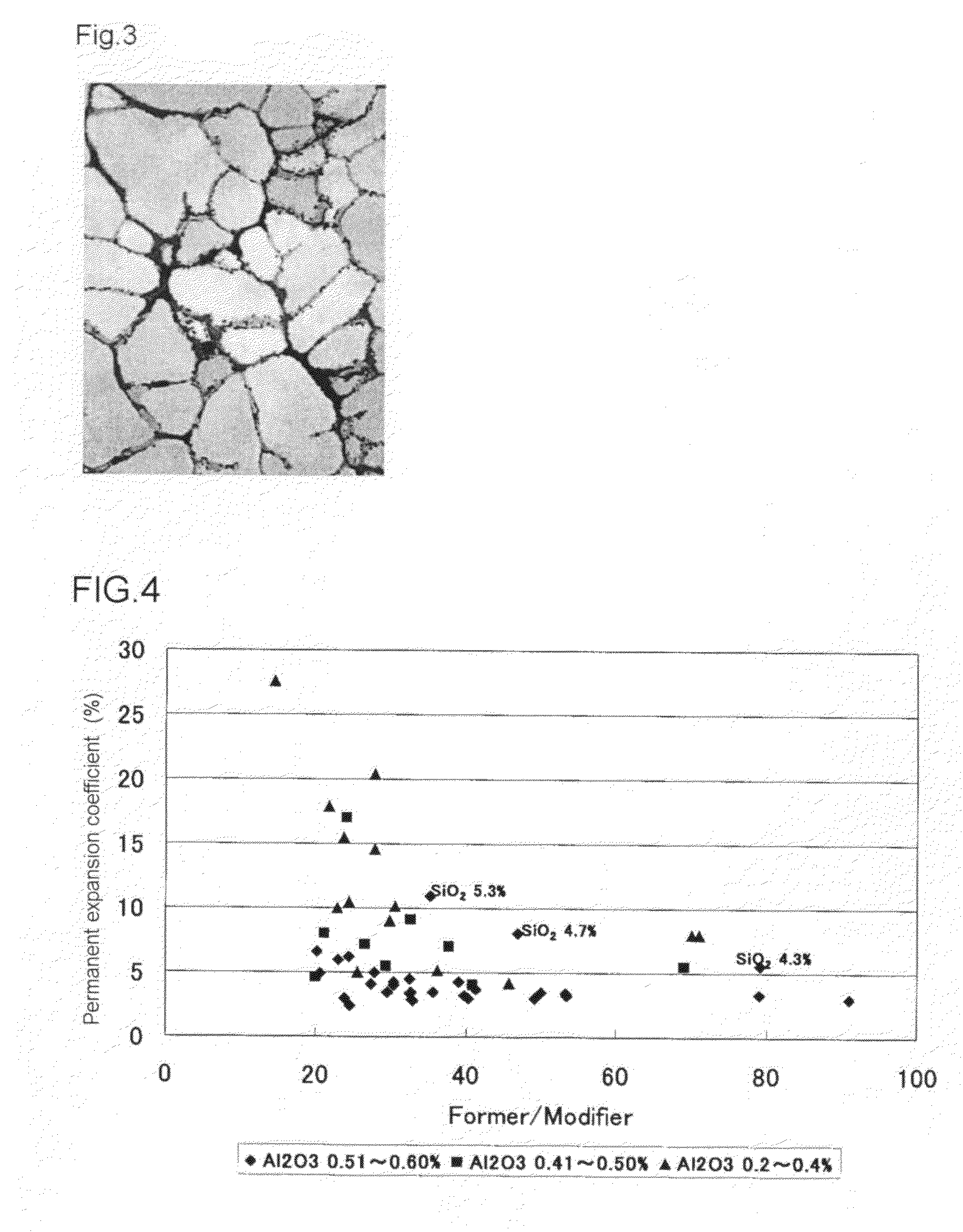High-resistance high-zirconia cast refractory material
a high-zirconia, cast refractory material technology, applied in the field of high-resistance can solve the problems of unsuit unfavorable high-zirconia cast refractory material, uncertain electric resistance value of conventional high-resistance refractory material, etc., to achieve stable high electric resistance, good stability toward repeated heating
- Summary
- Abstract
- Description
- Claims
- Application Information
AI Technical Summary
Benefits of technology
Problems solved by technology
Method used
Image
Examples
examples
[0134]Examples 1 to 11 and Comparative Examples 1 to 16 demonstrate the samples of high-zirconia cast refractory materials. The samples were prepared in the usual way as follows.
[0135]First, a zirconia raw material is prepared by desiliconizing zircon sand. The zirconia raw material is incorporated with SiO2, Al2O3, Na2O, B2O3, and other components in a prescribed ratio. The resulting mixture is fused in an arc electric furnace and the melt is cast into a mold. The casting is annealed together with the mold to room temperature in alumina powder.
[0136]The casting mold is a graphite one measuring 100×300×350 mm (inside), with a riser measuring 140×235×350 mm (inside) integrally attached to the upper part thereof. The cast is cut at a position 50 mm away from the riser, so that a sample measuring 100×300×300 mm is obtained for evaluation.
[0137]After annealing, the cast is removed from alumina powder and cut to give the desired high-zirconia cast refractory material. The thus obtained p...
PUM
| Property | Measurement | Unit |
|---|---|---|
| molar ratio | aaaaa | aaaaa |
| molar ratio | aaaaa | aaaaa |
| tensile stress | aaaaa | aaaaa |
Abstract
Description
Claims
Application Information
 Login to View More
Login to View More - R&D
- Intellectual Property
- Life Sciences
- Materials
- Tech Scout
- Unparalleled Data Quality
- Higher Quality Content
- 60% Fewer Hallucinations
Browse by: Latest US Patents, China's latest patents, Technical Efficacy Thesaurus, Application Domain, Technology Topic, Popular Technical Reports.
© 2025 PatSnap. All rights reserved.Legal|Privacy policy|Modern Slavery Act Transparency Statement|Sitemap|About US| Contact US: help@patsnap.com



